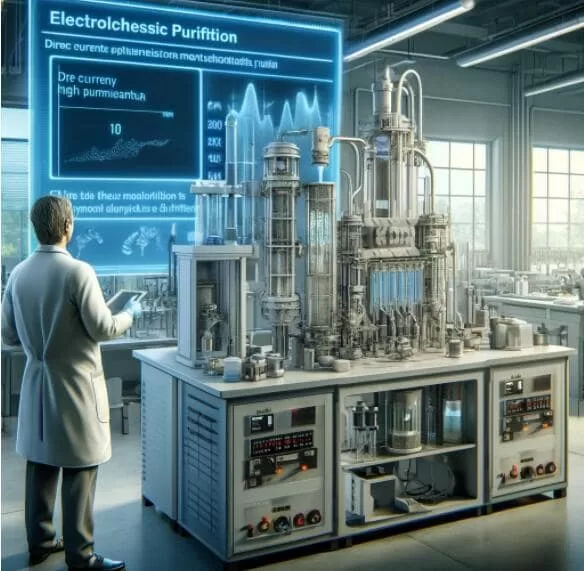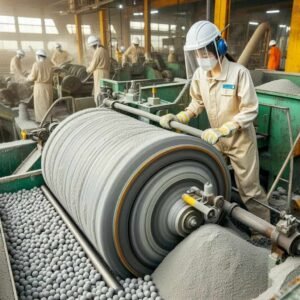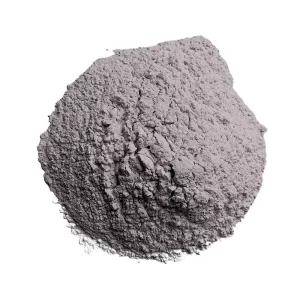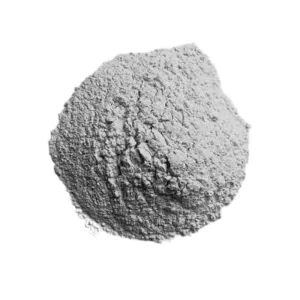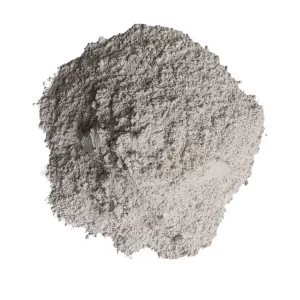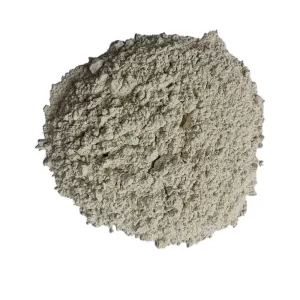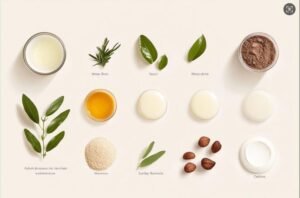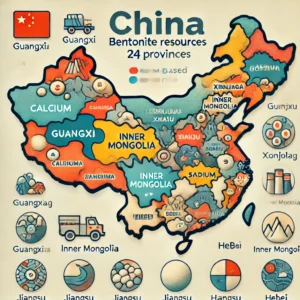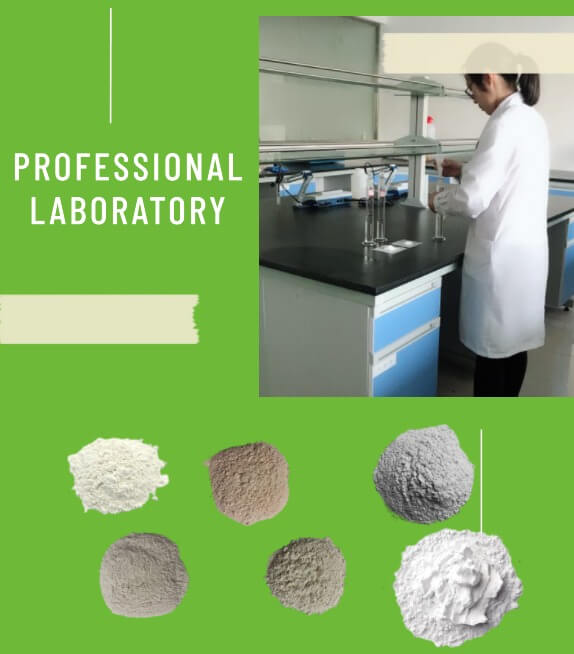1. Classification and Characteristics of Mortar
1.1 Classification
China’s bentonite ore resources are rich and include calcium-based bentonite, sodium-based bentonite, hydrogen-based, aluminum-based, sodium-calcium-based, and unclassified bentonite. Bentonite, also known as bentonite clay, primarily consists of montmorillonite (also known as microcrystalline kaolinite or glauconite). This clay rock often contains small amounts of ilmenite, kaolinite, zeolite, feldspar, and calcite. Montmorillonite is a hydrous aluminosilicate mineral with small amounts of alkali and alkaline earth metals, chemically represented as Nax(H2O)4{(Al2-xMg0)Si4O102}.
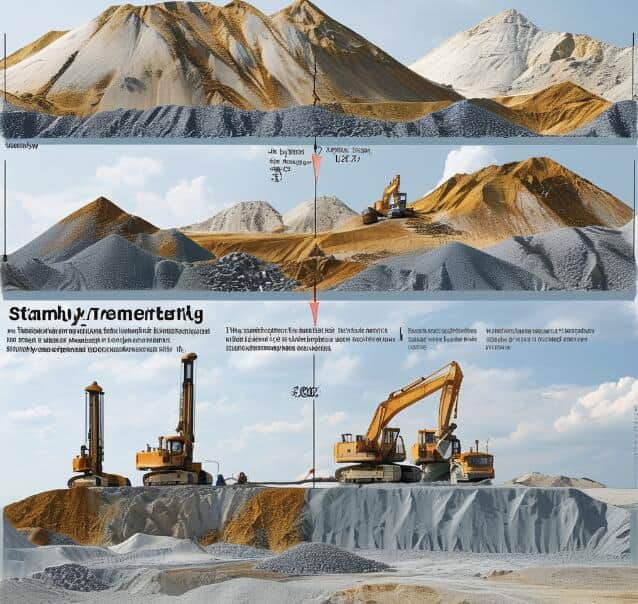
Based on the type, content, and chemical properties of the exchangeable positive ions in montmorillonite, bentonite is categorized into:
- Sodium bentonite (alkaline soil)
- Calcium bentonite (alkaline soil)
- Natural bleaching soil (acidic soil)
Calcium-based bentonite can further include calcium sodium-based and calcium magnesium-based types. The primary exchangeable positive ions for alkaline soil are Na (and K), while for acidic soil, the key exchangeable positive ions are H (Al3).
1.2 Properties
Physical Properties Bentonite generally appears white or yellowish, with variations due to iron content resulting in light grey, light green, pink, brownish-red, or black colors. Bentonite can be loose or dense and hard.
Chemical Composition The main chemical components of bentonite are silica (SiO2), aluminum oxide (Al2O3), and water (H2O). Compounds like magnesium oxide may also be higher, and elements such as calcium, sodium, and potassium are generally present. The Na2O and CaO components greatly affect the process properties of bentonite.
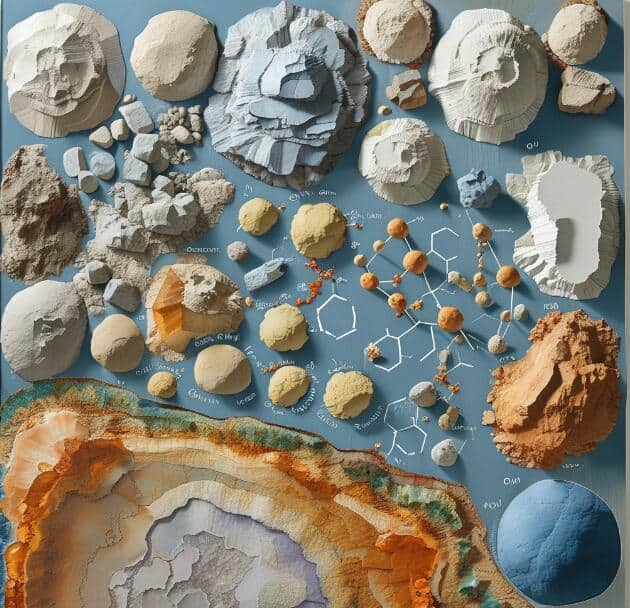
Physical and Chemical Properties Bentonite has strong water absorption, up to 30 times its weight. It forms a colloidal mixture in water with certain viscosity, thixotropy, and lubricity. It also has ductility and adhesion when mixed with water, mud, or sand. Bentonite has a strong cation exchange capacity and can adsorb various gases, liquids, and organic substances, up to five times its weight. Sodium-based bentonite generally has superior physical properties and production process performance compared to calcium-based or magnesium-based bentonite. Its key properties include:
- Slow moisture absorption but high water absorption and expansion
- High cation exchange capacity
- Good permeability and high gum price
- Excellent thixotropy, viscosity, and lubricity
- High pH value
- High thermal stability and plasticity
- Strong adhesion
- High tensile strength when wet and high compressive strength when dry
2. Mortar Testing Methods
The most common instrument for measuring mortar density is the density scale. To measure, fill the mortar cup with mortar, cover it tightly, and allow excess mortar to flow out through the center hole of the cover. After cleaning the cup surface, place the lever on the stand (the main cutter mouth sits on the main cutter pad). Use the MMO code to level the lever (the level bubble should be in the middle). Load the standard to the left of the game code to find the mortar density value. Calibrate the instrument with water before measuring mortar density; adjust the metal particles in the small box to the right of the lever if the reading is not at 1.0.
Mortar density is the ratio of the mortar’s net weight to the weight of the equivalent volume of water. The density measured on-site depends mainly on the weight of the slurry-making clay and the net weight of the drill cuttings. The net weight of additives should also be recorded if additives are used.
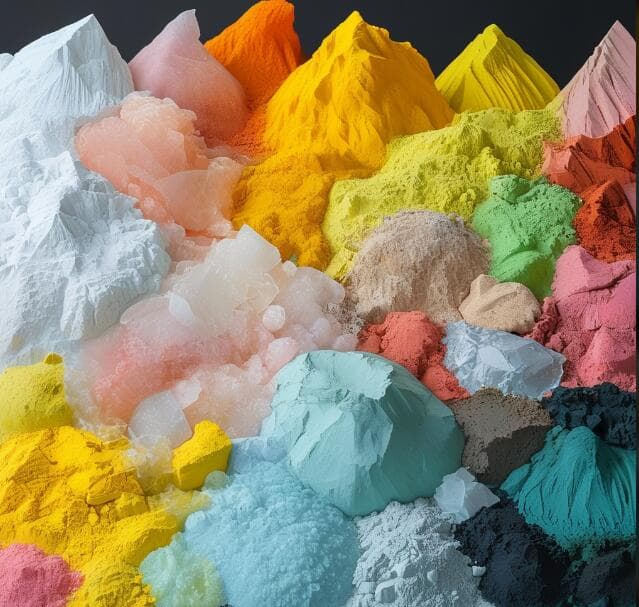
3. Use of Mortar in Various Geological Conditions and Their Effects
3.1 Drilling in Sand, Gravel, Pebbles, and Crushed Zones
In formations where particles lack cementation, such as sand, gravel, pebbles, and crushed zones, the hole edge is prone to collapse during drilling, making pile formation difficult. Improving cementation between particles at the hole edge with high-viscosity mortar is essential. Using finely dispersed mortar with high clay content and organic or inorganic viscosity enhancers can significantly enhance hole-side reliability.
3.2 Damage to Drilling Speed by Mortar
As mortar density increases, drilling speed decreases, especially when the density exceeds 1.06 to 1.10 g/cm³. For the same density, higher viscosity results in lower drilling speed.
3.3 Effect of Sand Content in Mortar on Drilling Holes
High sand content in mortar causes poor purification, blockage, seepage, or well collapse. It can lead to mud skin falling off and accidents in the hole. High fine sand content also shortens the service life of tubing, drill bits, pump cylinders, pistons, and tie rods. Therefore, maintaining stratum pressure balance while minimizing mortar density and sand content is crucial.
3.4 Mortar Density in Soft Ground
In soft ground strata, low mortar density or fast drilling speed can cause collapse. It is generally best to maintain the mortar density at 1.25 g/cm³.
4. Examples of Common Mortar Recipes
Mortar varieties in construction can be categorized by their composition, with the following configuration methods:
4.1 Na-CMC (Sodium Carboxymethyl Cellulose) Mortar
A common viscosity-raising mortar, Na-CMC also reduces water loss.
- Formulation: 150-200g high-quality slurry clay, 1000ml water, 5-10kg soda ash, and about 6kg Na-CMC.
- Characteristics: Density 1.07-1.1 g/cm³, viscosity 25-35s, water loss <12ml/30min, pH ~9.5.

4.2 Iron-Chromium Salt-Na-CMC Mortar
This mortar has strong adhesion stability and anti-flocculation (dilution) properties.
- Formulation: 200g clay, 1000ml water, 50% concentration soda ash solution, 20% concentration iron chromium salt solution, 0.5% Na-CMC.
- Characteristics: Density 1.10 g/cm³, viscosity 25s, water loss 12ml/30min, pH 9.
4.3 Lignosulfonate Mortar
Using lignosulfonate from sulfite paper paddle wastewater, generally combined with coal alkali agent.
- Formulation: 100-200kg clay, 300kg sulfite paper paddle wastewater, 100kg coal alkali agent, 10-20kg coal alkali agent, 5-10kg NaOH, 5-10kg defoamer, 900-1000L water.
- Characteristics: Density 1.06-1.20 g/cm³, funnel viscosity 18-40s, water loss 5-10ml/30min. Na-CMC can be added (0.1-0.3kg) to reduce water loss further.
4.4 Humic Acid Mortar
Humic acid mortar uses coal alkali agent or sodium humate as a viscosity enhancer.
- Formulation: 150-200kg coal alkali agent (dry amount), 5kg Na2CO3, 900-1000L water.
- Characteristics: Density 1.03-1.20 g/cm³, water loss 4-10ml/30min, pH 9.

